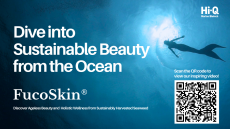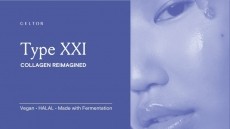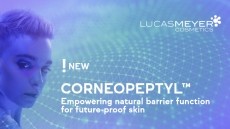Cradle to Cradle boom: Beauty and personal care the ‘most rapidly growing segment’

Earlier this month, the Cradle to Cradle Products Innovation Institute released Version 4.0 of its Cradle to Cradle (C2C) certified product standard after an extensive multi-stakeholder process, marking the first major revamp in five years. Whilst the founding framework across its five categories – material health, product circularity, clean air & climate protection, water & soil stewardship and social fairness – had remained firmly in place, there were several important additions and upgrades under the fourth version.
Fit for 2030 – ‘action is urgent, and progress needs to be made’
The “major changes” were in product circularity and social fairness which had seen entirely new frameworks implemented and there were updates and additions across material health and water & soil stewardship and enhanced criteria in climate protection, according to Christina Raab, VP of strategy and development at Cradle to Cradle Products Innovation Institute.
“The updates have been driven by new scientific findings, evolving industry practices and, of course, the commitments that have already been made for the years to come towards 2030,” Raab told CosmeticsDesign-Europe.
“For us, it means we’re really set up for the years to come (…) Our framework is really a solution and tool that can drive these sustainability and circularity goals and we feel that with Version 4.0, we are really fit for this decade. Action is urgent, and progress needs to be made.”
Raab said such an upgrade was “essential for the credibility of the standard”, particularly as it aimed to be a leadership standard.
“Of course, we need to find a balance, because updates we might make to the criteria have significant effects on product development, innovation and further renovations of products.” This, Raab said, was why Cradle to Cradle had issued a transition period of three years, effective from July 1, 2021, giving time for companies to make all necessary updates and changes to comply with Version 4.0.
“But I should mention that the race to switch to Version 4.0 is already on. We have some companies that worked already with the pilot version and there is the interest to potentially, either as a company or in a product category, be the first who comes out with Version 4.0, since there’s a bit of a competitive advantage in communication,” she said.
Beauty boom – the ‘most rapidly growing’ C2C certified segment
So, what did the C2C certification race look like in beauty and personal care?
“It is, at the moment, our strongest growing sector; our most rapidly growing segment of C2C certified,” Raab said.
“I would say that, compared to other sectors like fashion apparel which is also a consumer-facing sector and building environment which is more business-to-business, cosmetics and personal care has come onboard seriously in the last two to three years. But now, it is strongly growing.”
The future of Circular Beauty
Christina Raab is one of our esteemed industry expert panellists for CosmeticsDesign's upcoming free-to-attend webinar Circular beauty - Sustainable sourcing | Green chemistry | Eco-design. She'll be joined by Adrien Koskas, global brand president at Garnier; Tom Szaky, founder and CEO of TerraCycle; Jo Chidley, founder of Beauty Kitchen; and Barbara Olioso Phd MRSC, managing director of The Green Chemist Consultancy to brainstorm the future of Circular Beauty. So, if you're interested in how industry can make circularity a mainstream reality, you can register to attend now!
Cradle to Cradle currently worked with around 20 beauty and personal care companies, mostly brands, and she said it was likely this number would “significantly grow, if not double” in 2021.
And there was a real mix of companies working towards C2C certifications in the space, Raab said, including “really mainstream companies” scaling efforts across more product lines within existing portfolios and indie brands that had “built up business from scratch” around the standard.
“There are different sizes and different entry points into the programme. That’s what we’re observing.”
And challenges for these different sized companies varied drastically, Raab said. There remained “big opportunities” to develop more sustainable fragrance formulations, generally optimise chemistry when formulating any beauty product and drive further innovation in UV filters, she said. And for larger beauty firms, finding and onboarding the right suppliers could be particularly complex versus more agile, smaller companies. These small companies also often had more tight-knit, collaborative teams working across sustainability, sourcing, marketing and production, she said, which meant changes could “move potentially faster”.
“…The connection of the dots internally is definitely a challenge we have seen, and that it might take longer with some of the bigger, more complex companies.”
Packaging push – circularity beyond formulation and sourcing
Beyond formulation and ingredient innovation, Raab said an important shift in beauty was a rising interest in the circularity of packaging. And this interest, she said, aligned well with Version 4.0 of the Cradle to Cradle standard that now enabled companies to certify packaging.
“The standard was, at first, more focused and set up around the products and formulation, in particular with the strong material health category, and now, we have also upgraded and made explicit the packaging criteria behind the framework,” she said.
The Cradle to Cradle Products Innovation Institute would start accepting new applications to certify products under Version 4.0 of the standard in July this year.

![Skinfo's online widget provides a visual overview on beauty ingredient lists that is designed to be simple to read and understand amongst consumers [Image: Skinfo]](/var/wrbm_gb_food_pharma/storage/images/_aliases/wrbm_medium/publications/cosmetics/cosmeticsdesign-europe.com/article/2022/04/13/digital-beauty-tool-skinfo-aiming-to-simplify-ingredient-lists-online/15329874-1-eng-GB/Digital-beauty-tool-Skinfo-aiming-to-simplify-ingredient-lists-online.png)
![Despite ongoing difficulties associated with COVID-19 and Brexit, the certified UK organic beauty and wellness market has continued to grow [Getty Images]](/var/wrbm_gb_food_pharma/storage/images/_aliases/wrbm_medium/publications/cosmetics/cosmeticsdesign-europe.com/article/2022/03/10/uk-organic-beauty-and-wellness-surges-15-in-2021-with-2022-growth-predicted-says-soil-association/13309948-1-eng-GB/UK-organic-beauty-and-wellness-surges-15-in-2021-with-2022-growth-predicted-says-Soil-Association.jpg)
![In France - one of Europe's most important natural and organic cosmetic markets - strong growth has been seen for the category in pharmacies and parapharmacies [Getty Images]](/var/wrbm_gb_food_pharma/storage/images/_aliases/wrbm_medium/publications/cosmetics/cosmeticsdesign-europe.com/article/2021/10/14/natural-and-organic-cosmetics-market-europe-to-grow-in-pharmacies-beauty-stores-and-online-says-ecovia-intelligence/12924773-1-eng-GB/Natural-and-organic-cosmetics-market-Europe-to-grow-in-pharmacies-beauty-stores-and-online-says-Ecovia-Intelligence.jpg)
![Many beauty and personal care brands have already kickstarted important green initiatives and unveiled ambitious climate goals, and The European Green Deal must serve as an 'opportunity' for more action [Getty Images]](/var/wrbm_gb_food_pharma/storage/images/_aliases/wrbm_medium/publications/cosmetics/cosmeticsdesign-europe.com/article/2021/06/18/carbon-neutrality-2050-eu-goal-needs-green-beauty-push-says-globaldata/12578861-1-eng-GB/Carbon-neutrality-2050-EU-goal-needs-green-beauty-push-says-GlobalData.jpg)
























